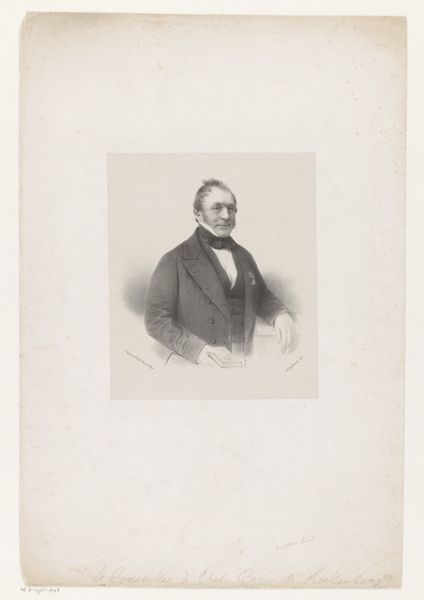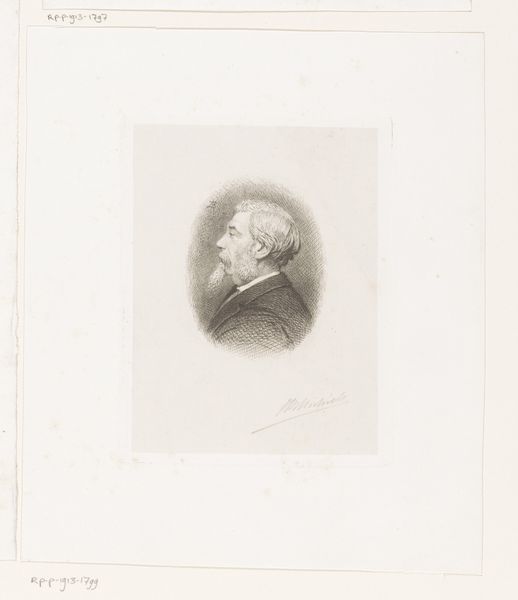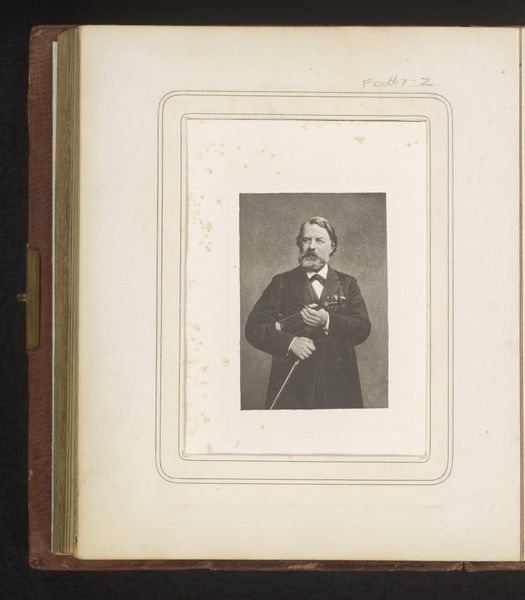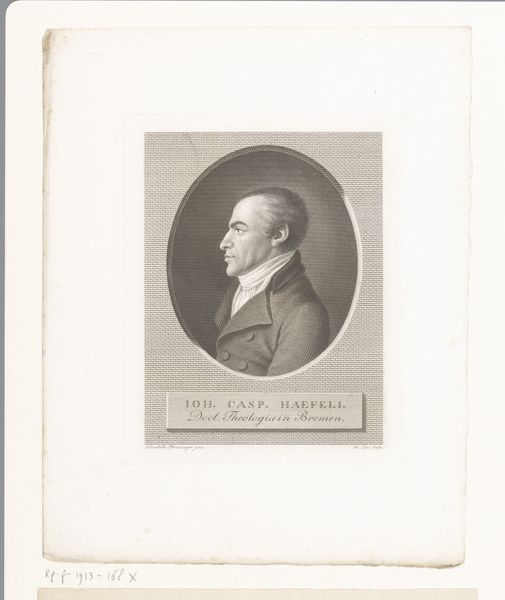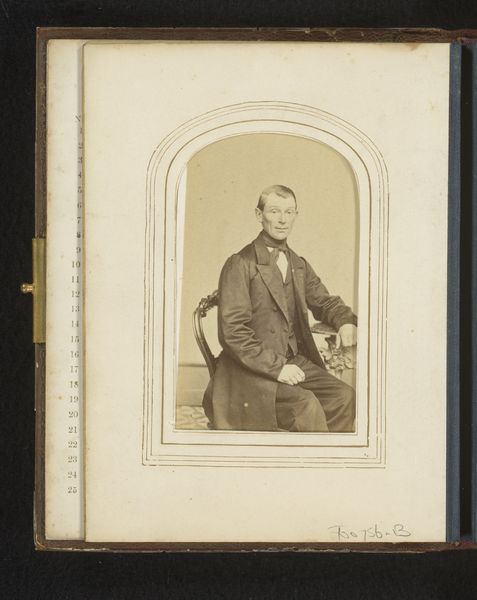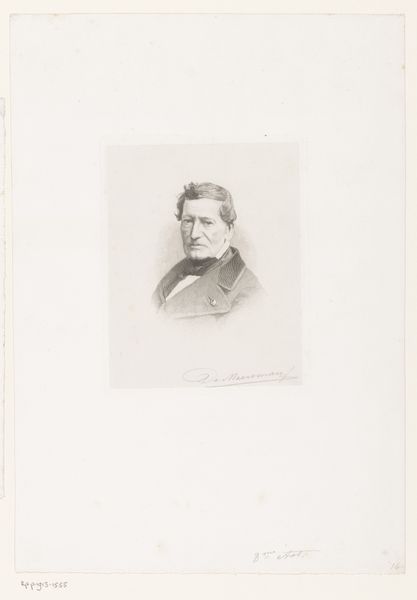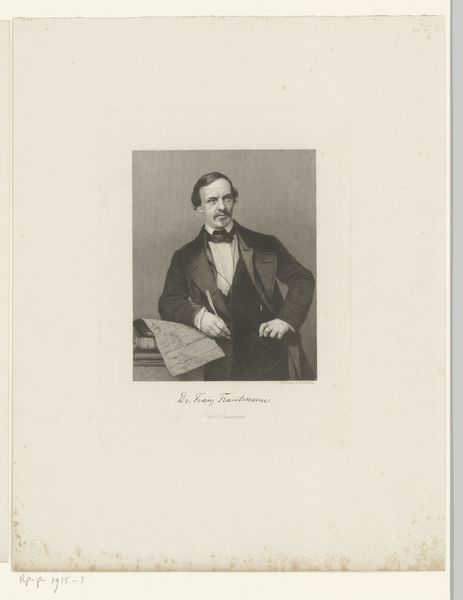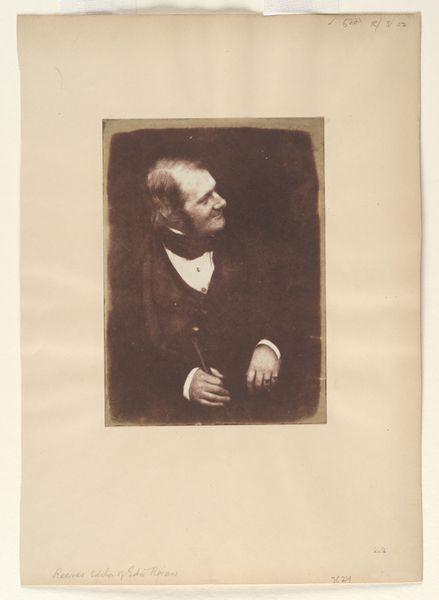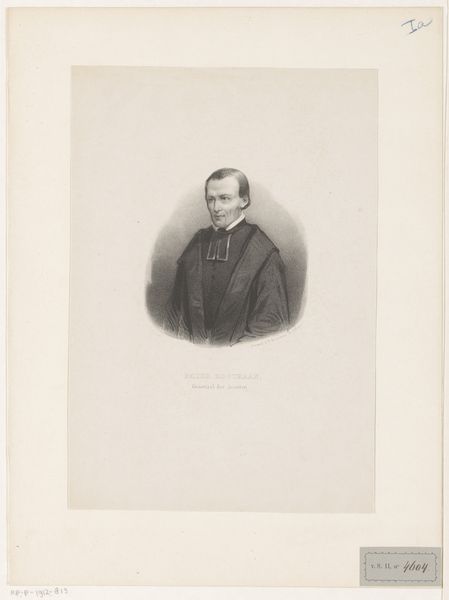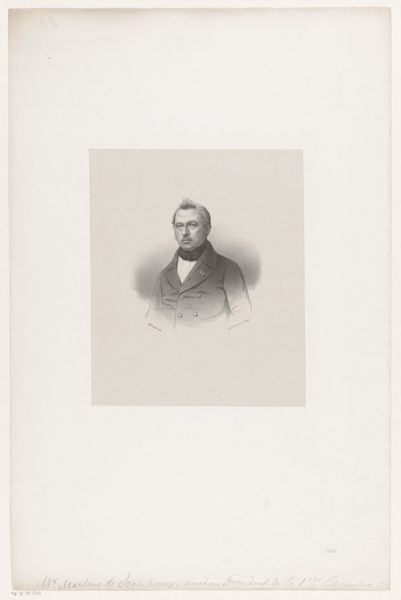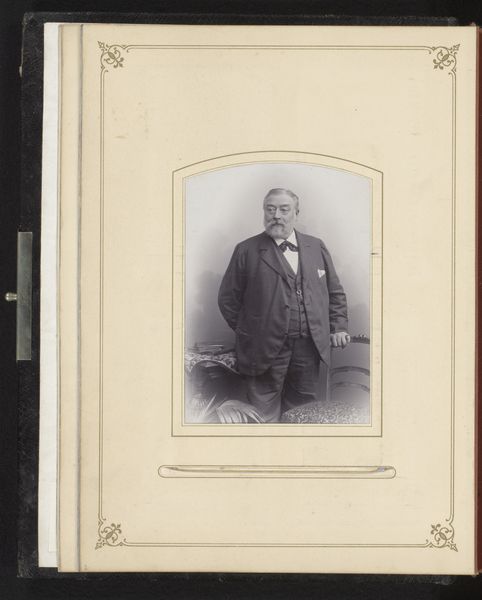
Fotoreproductie van een geschilderd portret van Don Juan Mateos door Diego Velázquez before 1875
0:00
0:00
Dimensions: height 211 mm, width 175 mm
Copyright: Rijks Museum: Open Domain
Curator: Here we have a photographic reproduction of Diego Velázquez's painted portrait of Don Juan Mateos. The gelatin silver print dates from before 1875. Editor: The light seems carefully considered here, with rich blacks contrasting bright highlights. What was the appeal of using photographs to copy portraits in this era? Curator: Photographic reproductions democratized access to Old Master paintings. Photography became a crucial tool for disseminating visual culture, influencing artistic styles and shaping public perception of art. Think about art history becoming more accessible, reproducible… Editor: Yes, more affordable and reproducible. How interesting that the creation of a seemingly unlimited supply is being offered as something of inherent value. What about the social impact and context here? Was Don Juan Mateos well known in his day? Curator: Mateos served in the court of Philip IV. These images reinforced social hierarchies while simultaneously transforming portraiture itself, making images more widely accessible to broader audiences. The portrait as propaganda! Editor: I agree that, for its time, portraiture would have definitely fulfilled propaganda-like goals. Focusing back on the image itself, I see an exploration of surface, from the dark clothing with very subtle, intricate designs and details, to the light bouncing off his ruffled collar and facial features. Curator: Consider also how this relates to photography's rise as an accepted artistic medium. Early photographs often mimicked painting styles, as seen here with the carefully controlled lighting that evokes Baroque portraiture. Editor: True. And looking closely at it as a material object – a gelatin silver print pasted into what appears to be a book – elevates its status, bridging a gap between popular dissemination and an art object, blurring the definition, and thereby questioning both! Curator: Absolutely! The reproduction reveals how photographic technologies change art’s perceived value and role in culture. Editor: Reflecting on the layers we've uncovered here, I see a collision of art forms—the painterly tradition being processed, repurposed, re-circulated as an "artwork" through this photo reproduction. Curator: Yes, understanding how visual representation reflects and shapes historical currents is really crucial. Thanks for the interesting perspective!
Comments
No comments
Be the first to comment and join the conversation on the ultimate creative platform.
